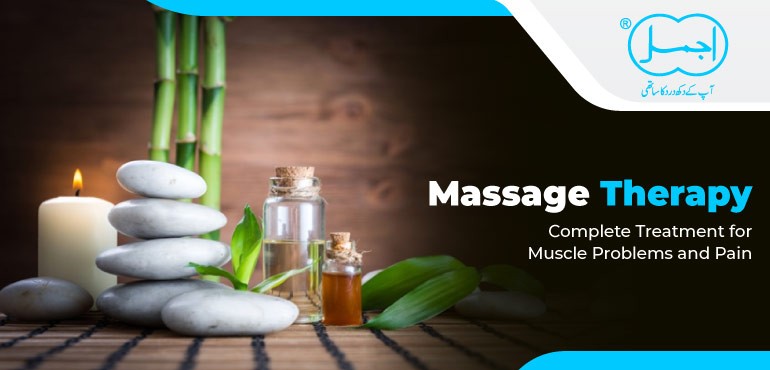Meditation is self-awareness training. Meditation Therapy is a concentration and power of thoughts. You can define meditation as “attention”. The moment one hears the name of meditation, the idea of a religious leader comes to one’s mind. But in the present era, its application has become very wide. Europe and the European lifestyle have experienced the crisis of materialistic progress. After the rise of materialistic life, people are returning to the spiritual life in search of peace. In this regard, Meditation Therapy halls have been established in all major cities of Europe, where a few drops of tears, a few sighs, and various words are repeated from anxious people in search of peace by closing their eyes, loosening their existence, and charging dollars and pounds.
The word ‘meditation’ is now widely used to refer to a large number of various methods. These methods include;
- Concentration
- Contemplation
- Use of nature sounds
- Guided meditation
- Meditative exercises
These methods and techniques work at different levels such as the senses, mind, intellect, and emotions. Some of these techniques are relatively easy to exercise, while some of them are more difficult and can cause participants to quit the exercise rather quickly. Meditation therapy can create a feeling of brightness, buoyancy, and liveliness in a person. Some even reveal the significance of meditation to the level that it plays the most important role in maintaining peace and order in the world.
Meditation therapy experts are startlingly successful and in a few moments, they get relief from tension and stress, feelings of youth and health, and longer life.
During the process of Meditation Therapy, accumulated anxiety, tension, and stress are removed, energy is augmented, and physical condition is improved on the whole. Research has established innumerable health benefits linked with the Meditation Therapy practice. These benefits include decreased anxiety, decreased depression, reduction in pain, stress reduction (both psychologically and physically), improved recollection, and increased productivity.
The physiological benefits of Meditation Therapy include reduced blood pressure, heart rate, lactate, cortisol, and epinephrine; decreased metabolism, breathing pattern, oxygen utilization, and carbon dioxide elimination and relative blood flow to the brain. Meditation practice also increases the cerebral blood flow in the anterior and frontal cingulated regions of the brain, which in turn increases the effectiveness of the brain’s executive attention system, and amplifies electroencephalogram (EEG) coherence.
A study performed on the effect of meditation on the executive attention network reveals that Meditation Therapy experts were faster on all tasks. As the age passes, the brain cortical thickness reduces, but meditation experience is connected with a rise in gray matter in the brain.
Reducing the High Cholesterol
Meditation therapy also helps in reducing the high cholesterol levels as well as smoking. A study examining the effects of meditation on exercise-induced myocardial ischemia (MI) in patients experiencing coronary artery disease (CAD) suggest that meditation considerably increased exercise tolerance and stamina, and delayed the onset of depression.
Research also has revealed that a complete lifestyle change program (including vegetarian diet and stress management – meditation and breathing exercises) enhanced health and transformed gene expression in patients with prostate cancer, (not treated with surgery), radiation, or hormonal therapy.
The basic principle of Meditation Therapy is that a calm mind maintains a person’s physical and emotional health. According to Meditation Therapy experts, by adding a few other factors to meditation and slightly modifying the way of life, your body disorders, eating disorders, urinary tract infections, high cholesterol, addiction, infectious diseases, depression and cancer can be cured.
In developed countries, many physicians encourage patients to meditate so that patients can easily overcome the pain and discomfort and the wound heals faster. Good blood is required to maintain good health, which carries oxygen and other nutrients to diseased cells.
Illness, wounds, fear, anxiety, stress, anger, etc., can damage the blood vessels and cause muscle strain. The patient is caught in a cycle of pain and rest that leads him to fear that he will never be healthy. The process of Meditation Therapy eliminates this cycle of pain and anxiety, the patient feels relaxed and his immune system begins to repair the body.
In other psychiatric disorders, regular meditation awakens the mental consciousness in a person and also increases the physical strength. Meditation Therapy enhances your workability and action.
Meditation and Modern Science
You can call meditation the connection between the mind and the body. In developed countries, the practice of Meditation Therapy has been found to be very useful in keeping people healthy. They are able to overcome their illnesses to a great extent through meditation. People are encouraged to meditate before taking medicine in the United States.
People who spend years in meditation have been found to have higher levels of the DHEA hormone, which decreases with age, than the average person. Such people are less likely to get sick and even less likely to have any heart disease.
Experts have found that when meditated with full attention, symptoms such as anxiety, feeling of extreme fear, and fear of open space begin to subside. Experts believe that meditation can help relieve both stress and mental retardation. The power of meditation plays a significant role in healing patients with depression. This meditation power is also based on scientific principles. Whenever you have sudden distress or accident, your brain immediately signals to supply hormones to specific glands. Then your heart feels heavy, blood pressure rises, breathing becomes faster and faster, the tension in the muscles, blood flow decreases and you start sweating. Mental relaxation relaxes the nerves. If you are accustomed to meditation, you will soon be able to control yourself in the situations described above.
It creates a feeling of happiness in you. You will feel free from stress and tension in a happy mood. At the same time, you will also feel a deep sense of calm as if you have had a very relaxing time.
Meditation does no harm. It is easy and practical. It does not require any medication and has no side effects. Everyone can meditate. 20 minutes of daily Meditation Therapy is easier and better for a person so that the thoughts can be focused on one center. The power to solve problems came back and individuals remained calm in bad situations.
It is an exercise of perception that brings the development of perception further than the daily experience of duality. It is an experience of unification that reduces the stress levels and brings better creativity and competence to the performance of inner faculty. Meditation is an exercise that comes without the mind directing the route.
In physical exercise, the mind does not tell the muscles to get stronger; rather, the muscles are strengthened naturally by the exercise process. Similarly, the results are achieved involuntarily, not by organizing the mind or any other psychological manoeuvring. The meditation process goes further than the brain to the innermost level of the internal self.
Methods of Meditation
The following methods of meditation are common practice.
1. Walk
Walk slowly and walk in a straight line. The line should be 20 feet long and your full attention should be on breathing and the sensations that arise from lifting the foot, moving the foot forward, and putting the foot back on the ground.
2. Imagination
The way to do this is to imagine white light flowing from your head to your feet and to realize that this white light is melting everything solid inside your body. Imagine for a second you were reversed into the karmic driven world of an earl. Think of breathing as a healthy process and believe that every breath is taking you to health.
3. Consciousness
A person should sit up straight on the floor or in a chair and focus on breathing in and out and examine his body and mind. And look at how physical and mental stress causes pain and how thoughts of fear and the notion of anger make a person unhappy. This analysis brings awareness to individuals. You enjoy every moment, listen more and talk less. With this type of meditation, an individual becomes calm and stays away from fights and quarrels. It also eliminates emotional flare-ups.
Meditate To Relieve Stress
Do you suffer from depression or feel tired? Meditation is a very ancient form of mental and physical exercise that gives you peace and comfort. Research has shown that meditation has both mental and physical benefits. It lowers blood pressure, insomnia, and depression. In addition, meditation also reduces the effects of colds and flu. You will need to spare a few minutes daily for this exercise. These meditation exercises will refresh you.
Choose A Quiet Place
Choose a quiet place for meditation where you can practice without any interference. Many things will distract you in the beginning, such as the noise of cars, the sound of birds or the words of people. It is best to turn off the electronic appliances and cell phones nearby and close the room. Close your ears with earplugs. You can also practice this wherever you want when you become accustomed to meditation.
Sit Comfortably
It can be done in any way while lying down, sitting or walking. But the condition is that you should be in a relaxed position so that the discomfort does not distract you.
Control Breathing
In all meditations you have to control your breath because deep breaths calm the body and mind. The most effective meditation is the one in which your entire focus is on the breath. Inhale and exhale through the nose. Keep your mouth close, but stay calm. Listen to the sounds of breathing. Take deep breaths. Place your hands on your stomach and feel the breath. Keep breathing at regular intervals. Controlling your breath will make you breathe slower and fill your lungs with more oxygen. Deep breaths will calm your upper torso, i.e., shoulders, neck and chest.
Focus On One Thing
The effect of meditating on something is an important part of Meditation Therapy. The goal is simply to get rid of the stress that causes depression. Some people focus on an object, a picture, a breath or even a simple screen. If that is the case, bring your thinking back to where you started meditating.
Depression and negative thinking have negative effects on human health and causes mental and physical illnesses. It deprive of individual from peace and contentment. There must be harmony between body and mind and heart to get rid of these problems. Meditation is very important in yoga. Meditation is essential for connecting body, mind and soul.
It not only calms the mind, but daily practice also eliminates all negative thoughts, apathy, emotion, anger, deprivation, ingratitude and mental and physical weakness and man seems to think and act positively. Meditation is better than various drugs and psychotherapy for patients with frustration and depression problems. Because drugs and therapies usually have only a temporary benefit and usually a person becomes addicted to drugs and becomes completely useless. It is not an exercise, but a focus on your mind and spirit.
Types of Meditation
Meditation experts have taught their students different methods of meditation. These meditations serve as classes in the student’s spiritual development so that the spiritual faculties are awakened one after the other. When a student acquires the power to meditate on a particular method, he or she moves on to the next stage. Different types of meditation therapy and their goals are determined based on the concept of meditation. If the purpose is to empower the body of light, then a meditation on light is taught.
Lightening meditation is done to observe the light. If the intention is to inculcate the attitude and qualities of the spiritual teacher in the student, then the teacher is imagined. In short, different meditations are taught according to the nature, ability and need of the student.
It can only be determined by an expert and perfect teacher who have reached the stage of meditation therapy both scientifically and practically. Meditation stimulates the inner human senses. In these all types of meditation, the third eye is awakened in a special way.
Practical Program
If you look at someone while meditating, it seems that a person is sitting with his eyes closed. These are the physical essentials of Meditation therapy , that is, how to sit while meditating, and what should the environment be like, etc. The essence of Meditation Therapy is its mental aspect. The practical aspect of meditation is how to meditate and what should be arranged for it.
The method of Therapy is to close the eyes and set the mind free from all thoughts and anxieties and to be attracted to a single idea or concept in such a way that one’s interest and mental relationship does not remain with all other thoughts. Two things are important in meditation. One is the emptiness of the mind and the other is the concept of Meditation Therapy. The emptiness of the mind means that a person should not confuse himself with any idea or imagination about anything with his intention. This condition can be called a kind of vacuity.
Sitting Style
There should be a comfortable and relaxed seat for meditation therapy so that there is no tension in the nerves and the body is not uncomfortable. One of the below mentioned sitting styles can be chosen for sitting in Meditation Therapy according to the physical statute and physical tendency;
Squatting Position
Sit on the floor or stool, roll up your left leg and place it under your right thigh, and roll up your right leg and place it over your left thigh. Keep the back and spine straight, but not too tense to stretch the muscles and not bend enough to bend the back. Place both hands on your knees in this sitting position. Hands can also be placed in the lap.
Seiza Position
Seiza is a traditional Japanese sitting position. Those who find it difficult to sit on their backs can sit in a Seiza position. It is also important for this sitting position that the back is not bent and the back is not stretched. Rather, it should be a comfortable position in which the muscles of the neck and back are not stressed.
It can also be done while sitting in a chair, but it is important to make sure that the back is straight and is not bent to the point of falling asleep. In the same way, meditation can be done while sitting on a stool, throne, or sofa. After sitting on a stool or throne, one should place a pillow on one’s lap and place one’s hands on it. Some meditations are also done lying on your back but this position can fall you into sleep. Meditation is also done while standing and there are some concepts that are done while walking, getting up and sitting, all the time.
The power of will must be exercised to keep the mind separate from undesirable and false thoughts. If a person is mentally disturbed, he is always confused. There should be a divider in the daily routine so that the mind does not get distracted by being idle. Look for positive activities for leisure time so that mental and physical energy is not wasted due to idle actions. Study good and informative books and healthy literature, essay writing, painting, or other similar activities. Arrange sports and proper physical exercise. Avoiding meaningless talk increases knowledge.




